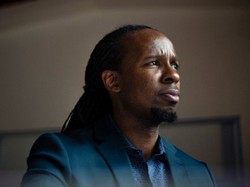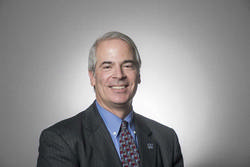The University President’s Advisory Council on Diversity and Inclusion held a campus-wide book discussion on Ibram X. Kendi’s “How to Be an Antiracist,” on Friday, Feb. 26. The New York Times bestselling book has been made available through the University store with 500 copies.
Faculty facilitators included Michael Corsey, Digital Content Strategist in the Department of University Marketing and Communication; Nicole Pulliam, Ph.D. Associate Professor in the Department Educational Counseling and Leadership; Jennifer McGovern, Ph.D., Assistant Professor and Faculty Athletics Representative; and Claude Taylor, Communication Lecturer and Director for Academic Transition and Inclusion.
Zaneta Rago-Craft, Ed.D., Director, Intercultural Center and Advisor to the President on Diversity and Inclusion, laid the groundwork for the discussion. She emphasized openness, respect and a willingness to learn.
 “We’re all here with the best intentions, which is to learn,” Rago-Craft said. “Sometimes learning doesn’t necessarily mean we’re all starting at the same place or ending at the same place. It’s a process, and respecting that we’re here with good intentions is something really important to remember.”
“We’re all here with the best intentions, which is to learn,” Rago-Craft said. “Sometimes learning doesn’t necessarily mean we’re all starting at the same place or ending at the same place. It’s a process, and respecting that we’re here with good intentions is something really important to remember.”
In “How to Be an Anti-racist,” Kendi shares his own experience with racist thinking. Rago-Craft asked the audience how his honesty may help to create a space that acknowledges and names our own internalized racist behaviors and attitudes.
Corsey suggested that Kendi may have created a space for those to comfortably share their thoughts on this question by design. “The topic in general is uncomfortable, right,” Corsey said. “On the other side of that discomfort is the growth, and that’s really where we want to get people. When you make it easier for people to talk about these things in different ways, it really does go a long way in helping.”
White students have expressed they feel permission to “let their guard down” around persons of color who share some, or have shared racist thinking or biases in general, Pulliam recalled. “As a person of color, I have heard my white students in particular say they appreciate those vulnerable, open and honest conversations where I can model some of that way of thinking to help them let their guard down,” Pulliam.
The question also draws attention to some important ways that individual behavior and collective or structural forces intersect, Taylor explained.
“What I’ve read in Kendi’s work is so much about the ways in which structural discrimination, racism and white supremacy shape the lives of people in ways that we may or may not recognize,” Taylor said. “I think this conversation about experiences with racist thinking and the vulnerability [it] exposes helps us see how so much of the experience people are born into is structural.”
President Patrick F. Leahy Ed.D., joined the conversation and shared his insight on the question. The biggest takeaway from Kendi’s work, Leahy said, is the need to constantly identify, describe, and then dismantle racism.
The opposite of racism is being anti-racist, and there’s a need to identify where those systemic problems in society that are obstacles to justice, equity, and inclusion are located.
“Given the incredible privileges that I have, not only as a person, but also the position that I’m entrusted with [at the University], I thought it was such a great inspiration for him to clarify that difference,” Leahy said.
“I do think that we have a responsibility to right the wrongs where we see them but it requires us being very conscious about identifying them and then trying to figure out what we can do to level those.”
Rago-Craft then posed the audience another question, asking about experiences calling out racism even if it may be uncomfortable to identify.
“It’s so important to call out racism when you see it, both interpersonal and structural,” Rago-Craft said. “I think sometimes one is easier to recognize than the other. I think there’s different levels of risk in terms of who calls it out. For me to call out something as racist [is different] than a white colleague or friend to call out something as racist in terms of the repercussions of what that could mean. Oftentimes, even if it’s not about a person and it’s not about [something] interpersonal, to call out a system, practice, structure, policy or law as racist is often personalized and there’s just a different level of risk.”
Calling out racism in a work setting comes with its own set of potential repercussions, Pulliam said. Calling out racism in personal settings, such as around a family dinner table during a holiday, has a different set of potential repercussions.
“I often struggle with it, especially with family. Sometimes it is exhausting work,” Pulliam said. “Sometimes I have to negotiate when to call out and fully recognize when I am not in a good enough mental state [to do so]. Then when I choose not to, I go back and say [to myself] ‘Man, I really should have said something.’ I think it’s important to recognize that we’re going to miss things. Sometimes, for myself, I choose depending on the situation to say I just don’t have the capacity to have this conversation right now.”
“It’s wonderful and important to show up [to these types of events],” Rago-Craft said.
“This is a really great way to be in community with one another across all of our roles here on campus. We all have work to do and a role to play. A special piece of gratitude to President Leahy for giving us the greenlight to be able to offer this text to the whole campus community in this way.”
IMAGE TAKEN from New York Times
IMAGE TAKEN from AAMC.com



